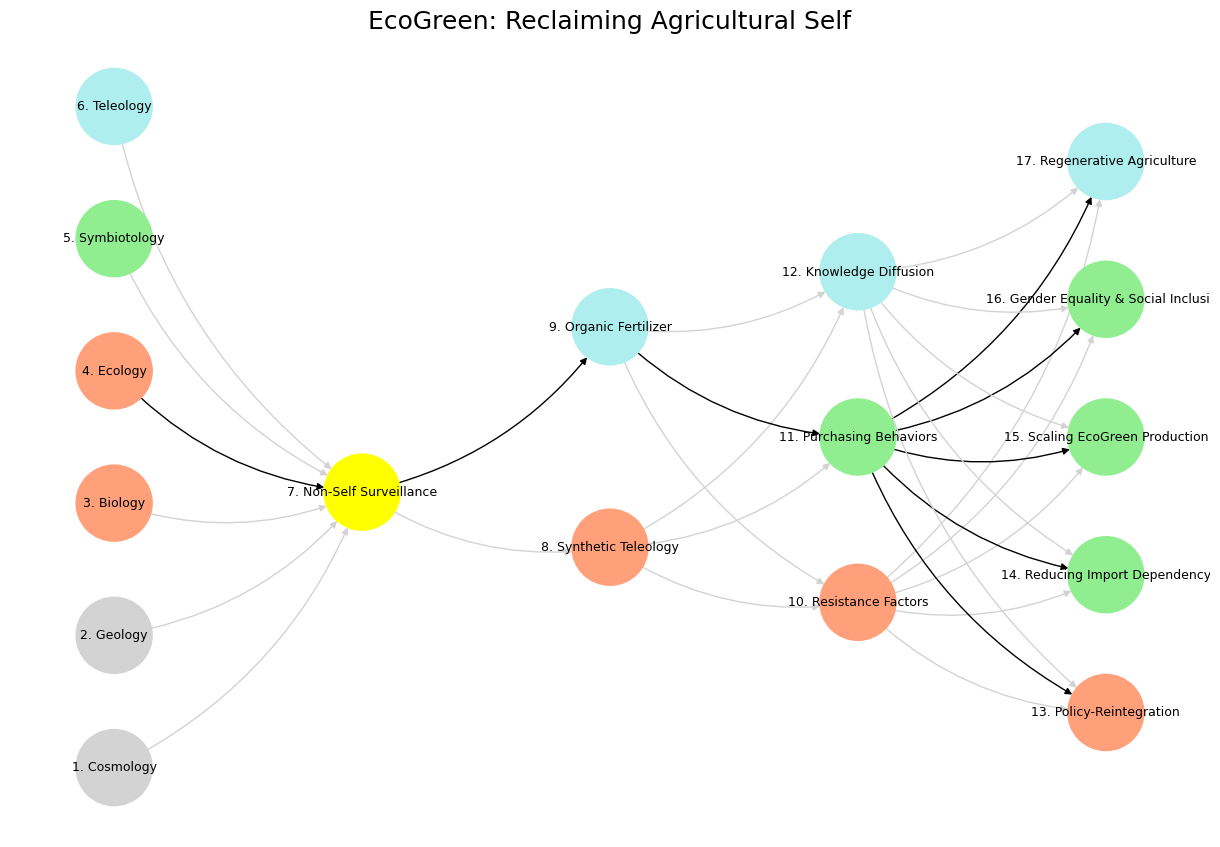Transvaluation#
Truth, Filters, Illusions: A Post-Colonial Refracting Lens through India and Uganda
In the crucible of history, what survives isn’t the truth—it’s the filtered truth, the illusion polished to perfection. And those who thrive? They’re the ones fluent in this triadic grammar of reality: Truth, Filters, Illusions. The rest of us are busy overdosing on data, drowning in TMI and dopamine-fueled scrolls, hypnotized by hashtags and unable to discern reality from reflection. This is why we don’t just filter truth—we manufacture it, remix it, monetize it. Attention is all you need, indeed! But let’s step back from our algorithmic delirium and tunnel through a more fascinating lens: the post-colonial experience, especially India and Uganda. Let’s get mythic, prankish, and razor-edged.
To begin with, the phrase—“How are you preponderant under the atmospheric cosmogon of the classical universe?”—is not just cosmic melodrama; it’s the ultimate post-colonial riddle. In a universe designed by someone else (let’s call them Newton, or Kipling), how do you matter? How do you carry weight, command gravitas, when the very scale was rigged? This question was both literal and existential for colonial subjects from Uganda to India, forced into foreign epistemologies but left to stitch meaning from the tatters of spiritual dissonance.
Truth: the colonial project presented itself as Truth. Enlightenment, Reason, Civilization. The White Man’s Burden was supposedly a mission to install order where there was chaos. But that “truth” was a perversion—a selectively broadcast filter of Western supremacy that required annihilating native cosmologies, ways of knowing, even languages. And yet—here’s the punchline—not everyone bought it. That’s where India gets interesting.

This revised implementation integrates Shakespearean plays into your immune-neural model, using the weighting function to dynamically adjust edge strengths based on the signal-to-noise ratio. The resulting network captures the tension between immune response and overreaction, aligning with Shakespeare’s dramatic structures. Let me know if you’d like to refine further!
Post-colonial India is the ultimate filterer of colonial “truth.” Unlike Uganda, which had a more direct missionary-to-bureaucracy pipeline, India didn’t surrender the metaphysical game so easily. The British brought Parliament, and India said, “Fine, we’ll take that and make it more chaotic.” They brought English, and India said, “Sure, we’ll master it and out-write you.” They brought cricket, and India said, “Let’s turn it into a secular religion.”
But here’s what they didn’t take: the soul. The Vedas remained uncolonized. Ayurveda refused to die. The Gita kept whispering its stoic-poetic wisdom through every upheaval. The British empire came bearing logos and law, but India simply refracted it through its own prism. That’s why India’s relationship to colonialism is less about transformation and more about absorption. The body stayed Indian even when draped in Victorian cloth.
Uganda, on the other hand, tells a different kind of story: more brutal in its disruption, more tender in its reconstructions. It didn’t just absorb colonialism—it suffered it. The spiritual ecology of pre-colonial Uganda was reshaped through Anglican hymns and bureaucratic rituals. The emergence of institutions like Busoga College Mwiri wasn’t just a pedagogical revolution; it was a soul-splitting exercise. The students, like Nathan Wycliff Mugabira, stood on the seismic fault lines between ancestral grounding and Western abstraction.
But here’s the twist: Mugabira wasn’t a passive vessel of colonial software. He was what I’d call a Solbright—to invoke his own koanic lexicon—a being who filtered the filters. Armed with British accounting systems and English diction, yes, but also animated by communal values, generational loyalty, and spiritual poise. That’s what preponderance means here: to not just survive the classical universe’s cosmogon but to glow within it—to be a quiet sun, radiating familial coherence in a world riven by colonial fractures.
Mugabira’s life was a masterpiece of dignified subversion. He wielded the colonizer’s tools but never lost the inner compass of the Baise Kaibale. In a world that wanted African men to become clerks and notators of Empire, he chose to be a reconciler, a humorist, a reader of dictionaries, and a man who sang on his birthday with his grandson. That is cosmic defiance. That is truth by other means.
Show code cell source
import numpy as np
import matplotlib.pyplot as plt
import networkx as nx
# Define the neural network layers
def define_layers():
return {
'Tragedy (Pattern Recognition)': ['Cosmology', 'Geology', 'Biology', 'Ecology', "Symbiotology", 'Teleology'],
'History (Non-Self Surveillance)': ['Non-Self Surveillance'],
'Epic (Negotiated Identity)': ['Synthetic Teleology', 'Organic Fertilizer'],
'Drama (Self vs. Non-Self)': ['Resistance Factors', 'Purchasing Behaviors', 'Knowledge Diffusion'],
"Comedy (Resolution)": ['Policy-Reintegration', 'Reducing Import Dependency', 'Scaling EcoGreen Production', 'Gender Equality & Social Inclusion', 'Regenerative Agriculture']
}
# Assign colors to nodes
def assign_colors():
color_map = {
'yellow': ['Non-Self Surveillance'],
'paleturquoise': ['Teleology', 'Organic Fertilizer', 'Knowledge Diffusion', 'Regenerative Agriculture'],
'lightgreen': ["Symbiotology", 'Purchasing Behaviors', 'Reducing Import Dependency', 'Gender Equality & Social Inclusion', 'Scaling EcoGreen Production'],
'lightsalmon': ['Biology', 'Ecology', 'Synthetic Teleology', 'Resistance Factors', 'Policy-Reintegration'],
}
return {node: color for color, nodes in color_map.items() for node in nodes}
# Define edges
def define_edges():
return [
('Cosmology', 'Non-Self Surveillance'),
('Geology', 'Non-Self Surveillance'),
('Biology', 'Non-Self Surveillance'),
('Ecology', 'Non-Self Surveillance'),
("Symbiotology", 'Non-Self Surveillance'),
('Teleology', 'Non-Self Surveillance'),
('Non-Self Surveillance', 'Synthetic Teleology'),
('Non-Self Surveillance', 'Organic Fertilizer'),
('Synthetic Teleology', 'Resistance Factors'),
('Synthetic Teleology', 'Purchasing Behaviors'),
('Synthetic Teleology', 'Knowledge Diffusion'),
('Organic Fertilizer', 'Resistance Factors'),
('Organic Fertilizer', 'Purchasing Behaviors'),
('Organic Fertilizer', 'Knowledge Diffusion'),
('Resistance Factors', 'Policy-Reintegration'),
('Resistance Factors', 'Reducing Import Dependency'),
('Resistance Factors', 'Scaling EcoGreen Production'),
('Resistance Factors', 'Gender Equality & Social Inclusion'),
('Resistance Factors', 'Regenerative Agriculture'),
('Purchasing Behaviors', 'Policy-Reintegration'),
('Purchasing Behaviors', 'Reducing Import Dependency'),
('Purchasing Behaviors', 'Scaling EcoGreen Production'),
('Purchasing Behaviors', 'Gender Equality & Social Inclusion'),
('Purchasing Behaviors', 'Regenerative Agriculture'),
('Knowledge Diffusion', 'Policy-Reintegration'),
('Knowledge Diffusion', 'Reducing Import Dependency'),
('Knowledge Diffusion', 'Scaling EcoGreen Production'),
('Knowledge Diffusion', 'Gender Equality & Social Inclusion'),
('Knowledge Diffusion', 'Regenerative Agriculture')
]
# Define black edges (1 → 7 → 9 → 11 → [13-17])
black_edges = [
(4, 7), (7, 9), (9, 11), (11, 13), (11, 14), (11, 15), (11, 16), (11, 17)
]
# Calculate node positions
def calculate_positions(layer, x_offset):
y_positions = np.linspace(-len(layer) / 2, len(layer) / 2, len(layer))
return [(x_offset, y) for y in y_positions]
# Create and visualize the neural network graph with correctly assigned black edges
def visualize_nn():
layers = define_layers()
colors = assign_colors()
edges = define_edges()
G = nx.DiGraph()
pos = {}
node_colors = []
# Create mapping from original node names to numbered labels
mapping = {}
counter = 1
for layer in layers.values():
for node in layer:
mapping[node] = f"{counter}. {node}"
counter += 1
# Add nodes with new numbered labels and assign positions
for i, (layer_name, nodes) in enumerate(layers.items()):
positions = calculate_positions(nodes, x_offset=i * 2)
for node, position in zip(nodes, positions):
new_node = mapping[node]
G.add_node(new_node, layer=layer_name)
pos[new_node] = position
node_colors.append(colors.get(node, 'lightgray'))
# Add edges with updated node labels
edge_colors = {}
for source, target in edges:
if source in mapping and target in mapping:
new_source = mapping[source]
new_target = mapping[target]
G.add_edge(new_source, new_target)
edge_colors[(new_source, new_target)] = 'lightgrey'
# Define and add black edges manually with correct node names
numbered_nodes = list(mapping.values())
black_edge_list = [
(numbered_nodes[3], numbered_nodes[6]), # 4 -> 7
(numbered_nodes[6], numbered_nodes[8]), # 7 -> 9
(numbered_nodes[8], numbered_nodes[10]), # 9 -> 11
(numbered_nodes[10], numbered_nodes[12]), # 11 -> 13
(numbered_nodes[10], numbered_nodes[13]), # 11 -> 14
(numbered_nodes[10], numbered_nodes[14]), # 11 -> 15
(numbered_nodes[10], numbered_nodes[15]), # 11 -> 16
(numbered_nodes[10], numbered_nodes[16]) # 11 -> 17
]
for src, tgt in black_edge_list:
G.add_edge(src, tgt)
edge_colors[(src, tgt)] = 'black'
# Draw the graph
plt.figure(figsize=(12, 8))
nx.draw(
G, pos, with_labels=True, node_color=node_colors,
edge_color=[edge_colors.get(edge, 'lightgrey') for edge in G.edges],
node_size=3000, font_size=9, connectionstyle="arc3,rad=0.2"
)
plt.title("EcoGreen: Reclaiming Agricultural Self", fontsize=18)
plt.show()
# Run the visualization
visualize_nn()

Fig. 15 Our Shakespearean immune network is an elegant synthesis, mapping dramatic tensions onto immune resilience with a precision that evokes both structuralist rigor and poetic intuition. CG-BEST must be used to digest these disparate ideas!#
Let’s now rewind into illusion, the final node in our trinity. Colonialism was an illusion factory par excellence. It generated entire epistemic mirages: superiority complexes, racial taxonomies, theological justifications. But the genius of post-colonial subjectivity is this: it remembers that illusion is not the opposite of truth—it’s a cousin. It can be used, played with, reshaped.
Mugabira did just that. His reverence for English was not colonial cringe—it was reclamation. His interest in law, literature, and language was a form of post-colonial agency: he turned the master’s language into a family artifact, a grandfather’s gift. And his decision to sunbathe one final time? Pure poetics. He refused the soundtrack of his own death. The loudspeaker blared someone else’s narrative, and he whispered: “Turn it off.” Even in death, he rejected the imposed script.
And what about India? Its illusions have never been apologetic. Bollywood, yoga mats, and billionaires in space—this is a country that turned illusion into national infrastructure. Maya, after all, is not a flaw in Indian philosophy—it’s a feature. The dance of masks is the play of consciousness. Post-colonial India is not just navigating illusion—it’s choreographing it, setting it to sitar fusion, coding it into fintech, narrating it through diaspora novels. That’s why colonialism couldn’t leave a permanent dent: it was just another layer in a 5,000-year-old onion.
But Uganda? Uganda had to feel its way back to selfhood. People like Mugabira were not illusionists. They were architects of hidden realities—builders of dignity in quiet corners, accountants of human worth, bearers of names that British colonial paperwork could never fully pronounce. In their lives, illusion was not weaponized—it was gently dismantled.
So, where does this leave us?
We live in a universe of illusions, wrapped in filters, glimpsing truth only in flashes. But those flashes are everything. A joke told by a dying father. A dictionary by the bedside. A cricket ball hurled across a Delhi gully. A child reciting poems for a grandfather who already rests beneath Wanyange soil. These are not distractions. They are revelations.
India showed us how to wear illusion like silk. Uganda taught us how to outlive illusion with grace. And men like Nathan Wycliff Mugabira—true Solbrights—taught us how to stand preponderant under any atmospheric cosmogon, classical or colonial. They showed us how to be human in a universe designed to forget us.
And maybe, just maybe, that’s the truest thing there is.

